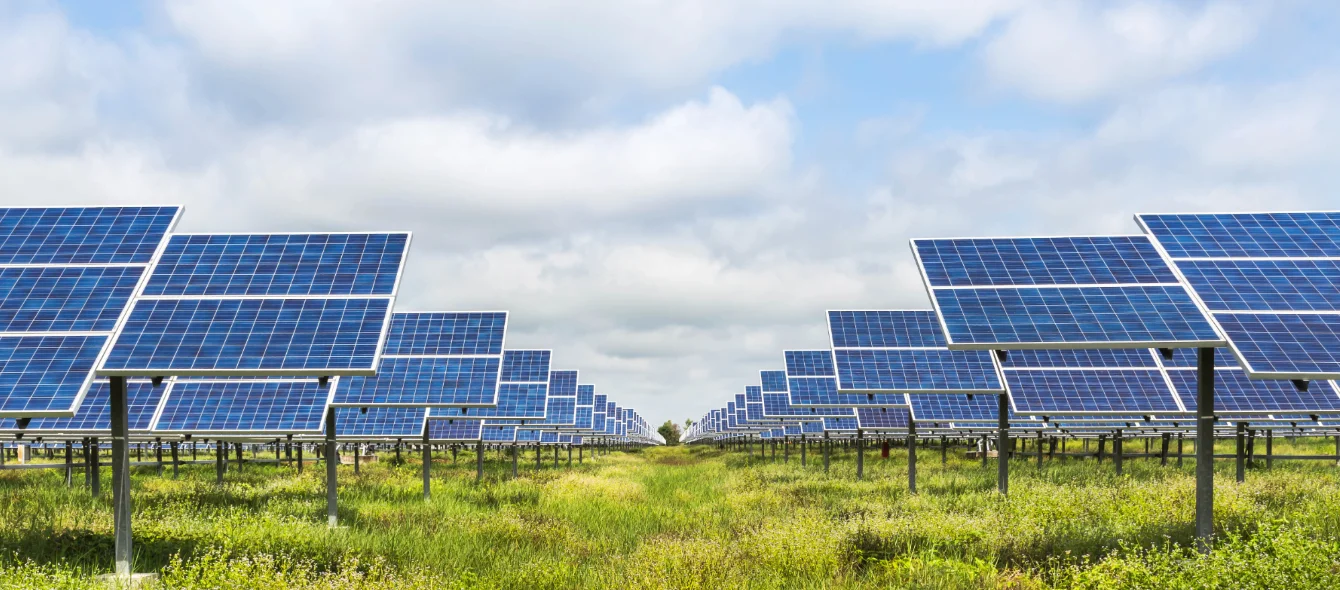Experts agree that renewable generation capacity must be increased considerably in order to achieve the Paris climate goals. They have forecast demand for green electricity in three scenarios. The main conclusion drawn by the New Energy Outlook 2021 report by energy market research firm BloombergNEF is that, to hit the net zero target by 2050, annual wind energy build-out will have to increase more than five-fold, with solar power more than tripling. In numbers, 505 gigawatts (GW) of wind and 455 GW of solar capacity would have to go online every year.
In view of the trends witnessed so far, experts estimate that global emissions from the energy sector would have to drop by 30 percent by 2030 and as much as75 percent by 2040. This would limit global warming to approximately 1.75°C. They set out how greenhouse gas emissions can be scaled back in all three scenarios (green, grey and red). The challenge here is that fossil fuel accounts for 83 percent of all energy supplied today, and thus continues to dominate the scene. Renewable energy currently stands at some twelve percent, with wind and solar combining for a mere 1.3 percent and nuclear accounting for the remaining five.
Primary energy consumption in 2019
in percent, source: BNEFThe green look into the crystal ball focuses on the expansion of renewable energy and sustainable hydrogen. This scenario has 85 percent of energy supply in 2050 being covered by renewables, with fossil fuel taking a share of just 10 percent. In the grey outlook, the focus lies on carbon capture and storage (CCS) techniques to enable the continued use of fossil fuel, which would command a share of 52 percent in 2050. However, this scenario also envisages subsidising renewables to make them responsible for 42 percent of all energy supplied by 2050. The red projection reflects the weakest expansion of renewable energy, making up a mere 27 percent of the energy mix. This trajectory primarily banks on nuclear power, which would cover 66 percent of energy supply in 2050. The green scenario provides the most exciting outlook.
Significant rise in demand for electricity forecast
The main takeaway from all three scenarios is that the share of final energy usage accounted for by electricity will rise significantly with a view to lowering emissions, e.g., in transportation, buildings and industry. The least amount of electricity – nearly 62,200 terawatt hours (TWh) – is used in 2050 in the grey scenario, which is already twice as much as the current level of generation. In the green scenario, a substantial amount of electricity is used for sustainable hydrogen production alone. The experts have calculated a need for 121,500 TWh for 2050, roughly 4.5 times more than today. This pushes the share of electricity in final energy consumption to almost 50 percent compared to 19 percent at present.
Solar plays particularly strong role in renewable expansion
The study identifies the need to expand wind and solar capacity by 505 GW and 455 GW annually to ensure that these gargantuan amounts of electricity can be produced in the future. This represents about 5.2 and 3.2 times the wind and solar capacity installed in 2020. In addition, 245 gigawatt hours (GWh) in battery storage capacity would have to be built every year. This is approximately 26 times the storage growth rate witnessed in 2020.
Based on the study, solar power will play a pivotal role. All three scenarios require it to grow its share of the electricity mix more than any other energy source. The green outlook envisages PV assets with a total capacity of 16.5 terawatts (TW) being installed by 2050, with the grey scenario calling for 7.3 TW. Second place is taken by onshore wind at 15.4 TW in the green vision and 5.6 TW in the grey scenario, followed by offshore wind with between 1.4 TW in the grey and 9.8 TW in the green view of the future.
Electricity generation by technology in 2050 (green scenario)
in TW, source: BNEFHydrogen is also considered a key element in reducing emissions. Electrolysers with an aggregate capacity of 1.9 TW are to be built by 2030 in order to kick-start the sector. The green scenario in particular banks on this climate-friendly fuel. It envisages hydrogen covering 22 percent of energy consumption in 2050, placing this fuel second behind electricity despite its current share, which stands at a negligible 0.002 percent. According to the experts, improvements in electrolysis technology may lead to a reduction in the amount of electricity needed, but the study still predicts demand for nearly 60 TWh of electricity for hydrogen production alone – almost twice today’s power production.
Photo credit: © Soonthorn Wongsaita, shutterstock.com
